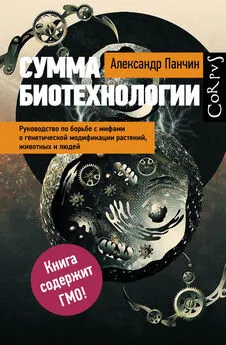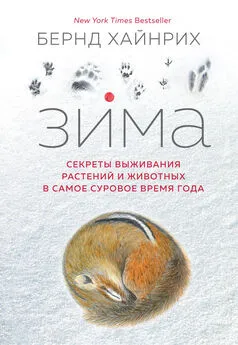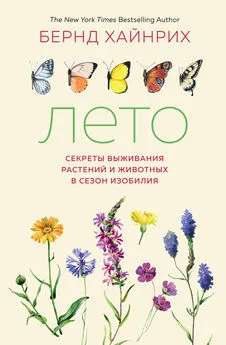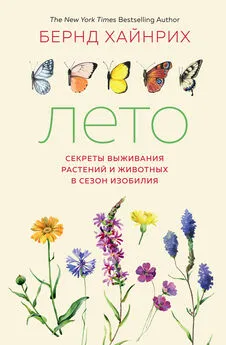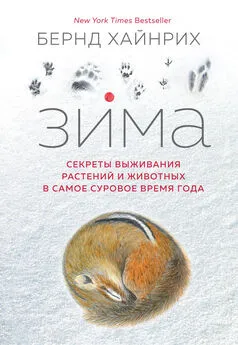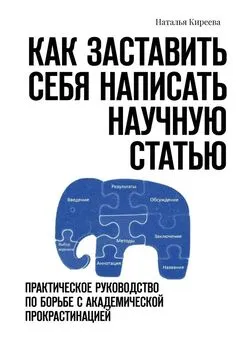Александр Панчин - Сумма биотехнологии. Руководство по борьбе с мифами о генетической модификации растений, животных и людей
- Название:Сумма биотехнологии. Руководство по борьбе с мифами о генетической модификации растений, животных и людей
- Автор:
- Жанр:
- Издательство:АСТ: CORPUS
- Год:2016
- Город:Москва
- ISBN:978-5-17-093602-1
- Рейтинг:
- Избранное:Добавить в избранное
-
Отзывы:
-
Ваша оценка:
Александр Панчин - Сумма биотехнологии. Руководство по борьбе с мифами о генетической модификации растений, животных и людей краткое содержание
Сумма биотехнологии. Руководство по борьбе с мифами о генетической модификации растений, животных и людей - читать онлайн бесплатно ознакомительный отрывок
Интервал:
Закладка:
97. Avery O.T. et al.: Studies on the Chemical Nature of the Substance Inducing Transformation of Pneumococcal Types: Induction of Transformation by a Desoxyribonucleic Acid Fraction Isolated from Pneumococcus Type Iii. The Journal of experimental medicine 1944, 79(2):137–58.
98. Overballe-Petersen S. et al.: Bacterial natural transformation by highly fragmented and damaged DNA. Proceedings of the National Academy of Sciences of the United States of America 2013, 110(49):19860–5.
99. Taleb N. et al.: The Precautionary Principle (with Application to the Genetic Modification of Organisms). EXTREME RISK INITIATIVE – NYU SCHOOL OF ENGINEERING WORKING PAPER SERIES 2014.
100. Berner R.A.: Atmospheric oxygen over Phanerozoic time. Proc Natl Acad Sci U S A 1999, 96(20):10955–7.
101. Schloss P.D., Handelsman J.: Status of the microbial census. Microbiol Mol Biol Rev 2004, 68(4):686–91.
102. Sears C.L.: A dynamic partnership: celebrating our gut flora. Anaerobe 2005, 11(5):247–51.
103. Kong A. et al.: Rate of de novo mutations and the importance of father’s age to disease risk. Nature 2012, 488(7412):471–5.
104. Kunkel T.A.: Evolving views of DNA replication (in)fidelity. Cold Spring Harb Symp Quant Biol 2009, 74:91–101.
105. Bostanci A.: Wildlife biology. A devil of a disease. Science 2005, 307(5712):1035.
106. Rebbeck C.A. et al.: Origins and evolution of a transmissible cancer. Evolution 2009, 63(9):2340–9.
107. Villeneuve P.J., Mao Y.: Lifetime probability of developing lung cancer, by smoking status, Canada. Can J Public Health 1994, 85(6):385–8.
108. Nelson P.N. et al.: Human endogenous retroviruses: transposable elements with potential? Clin Exp Immunol 2004, 138(1):1–9.
109. Mi S. et al.: Syncytin is a captive retroviral envelope protein involved in human placental morphogenesis. Nature 2000, 403(6771):785–9.
110. McClintock B.: The origin and behavior of mutable loci in maize. Proc Natl Acad Sci USA 1950, 36(6):344–55.
111. Kasahara M. et al.: On the origins of the adaptive immune system: novel insights from invertebrates and cold-blooded vertebrates. Trends Immunol 2004, 25(2):105–11.
112. Holland L.Z. et al.: The amphioxus genome illuminates vertebrate origins and cephalochordate biology. Genome Res 2008, 18(7):1100–11.
113. Kapitonov V.V., Jurka J.: RAG1 core and V(D)J recombination signal sequences were derived from Transib transposons. PLoS Biol 2005, 3(6):e181.
114. Panchin Y., Moroz L.L.: Molluscan mobile elements similar to the vertebrate Recombination-Activating Genes. Biochem Biophys Res Commun 2008, 369(3):818–23.
115. Tonegawa S.: Somatic generation of antibody diversity. Nature 1983, 302(5909):575–81.
116. Jolly C.J., Neuberger M.S.: Somatic hypermutation of immunoglobulin kappa transgenes: association of mutability with demethylation. Immunol Cell Biol 2001, 79(1):18–22.
117. Makarova K.S. et al.: Evolution and classification of the CRISPR-Cas systems. Nat Rev Microbiol 2011, 9(6):467–77.
118. Kyndt T. et al.: The genome of cultivated sweet potato contains Agrobacterium T-DNAs with expressed genes: An example of a naturally transgenic food crop. Proc Natl Acad Sci U S A 2015.
119. Matveeva T.V. et al.: Horizontal gene transfer from genus agrobacterium to the plant linaria in nature. Mol Plant Microbe Interact 2012, 25(12):1542–51.
120. Nikoh N. et al.: Wolbachia genome integrated in an insect chromosome: evolution and fate of laterally transferred endosymbiont genes. Genome Res 2008, 18(2):272–80.
121. Crisp A. et al.: Expression of multiple horizontally acquired genes is a hallmark of both vertebrate and invertebrate genomes. Genome Biol 2015, 16(1):50.
122. Zheng P. et al.: A phenylalanine in DGAT is a key determinant of oil content and composition in maize. Nat Genet 2008, 40(3):367–72.
123. Krishna V. et al.: Transgenic crops, production risk and agrobiodiversity. Eur Rev Agric Econ 2015.
124. Retraction notice to “Long term toxicity of a Roundup herbicide and a Roundup-tolerant genetically modified maize” [Food Chem. Toxicol. 50 (2012) 4221–4231]. Food Chem Toxicol 2014, 63:244.
125. Seralini G.E. et al.: Long term toxicity of a Roundup herbicide and a Roundup-tolerant genetically modified maize. Food Chem Toxicol 2012, 50(11):4221–31.
126. Langridge P.: Problems lie at several levels and bring into serious question the quality and standard of the editorial processes in your journal. Food Chem Toxicol 2013, 53:441.
127. Le Tien D., Le Huy H.: Comments on “Long term toxicity of a Roundup herbicide and a Roundup-tolerant genetically modified maize”. Food Chem Toxicol 2013, 53:443–4.
128. GrÜnewald W., Bury J.: Comment on “Long term toxicity of a Roundup herbicide and a Roundup-tolerant genetically modified maize” by Seralini et al. Food Chem Toxicol 2013, 53:447–8.
129. Barale-Thomas E.: The SFPT feels compelled to point out weaknesses in the paper by Seralini et al. (2012). Food Chem Toxicol 2013, 53:473–4.
130. Berry C.: Adverse effects in a feeding study of a GM derived corn in rats. Food Chem Toxicol 2013, 53:445–6.
131. Tester M.: It does not become the quality of a journal such as Food and Chemical Toxicology to publish such poor work. Food Chem Toxicol 2013, 53:457.
132. Schorsch F.: Serious inadequacies regarding the pathology data presented in the paper by Seralini et al. (2012). Food Chem Toxicol 2013, 53:465–6.
133. Tribe D.: My comments about the paper do not adequately describe the serious failures that have occurred in the peer review process at FCT. Food Chem Toxicol 2013, 53:467–72.
134. Robert W. et al.: We request a serious reconsideration of the recent paper by Seralini et al. alleging tumorigenesis in rats resulting from consumption of corn derived from crops improved through biotechnology (Seralini et al., 2012). Food Chem Toxicol 2013, 53:455–6.
135. Sanders D. et al.: Re: Seralini, G.-E., et al. Long term toxicity of a Roundup herbicide and a Roundup-tolerant genetically modified maize. Food Chem. Toxicol. (2012). Food Chem Toxicol 2013, 53:450–3.
136. Ollivier L.: A comment on Seralini, G.-E., et al., Long term toxicity of a Roundup herbicide and a Roundup-tolerant genetically modified maize. Food Chem. Toxicol. (2012), http://dx.doi.org/10.1016/j.fct.2012.08.005. Food Chem Toxicol 2013, 53:458.
137. Trewavas A.: Science requires the dispassionate presentation of information. Food Chem Toxicol 2013, 53:449.
138. Portier C.J. et al.: Inconclusive findings: now you see them, now you don’t! Environ Health Perspect 2014, 122(2):A36.
139. de Souza L., Macedo Oda L.: Long term toxicity of a Roundup herbicide and a Roundup-tolerant genetically modified maize. Food Chem Toxicol 2013, 53:440.
140. Panchin A.Y.: Toxicity of Roundup-tolerant genetically modified maize is not supported by statistical tests. Food Chem Toxicol 2013, 53:475.
141. Heinemann J.A.: Food and chemical toxicology. Food Chem Toxicol 2013, 53:442.
142. Bennett C. et al.: Neural Correlates of Interspecies Perspective Taking in the Post-Mortem Atlantic Salmon: An Argument For Proper Multiple Comparisons Correction. Journal of Serendipitous and Unexpected Results 2010, 1(1):1–5.
143. Abdi H.: The Bonferonni and Šidák Corrections for Multiple Comparisons. Encyclopedia of Measurement and Statistics 2007.
144. Armstrong R.: When to use the Bonferroni correction. Ophthalmic and Physiological Optics 2014, 34(5):502–8.
145. Davenas E. et al.: Human basophil degranulation triggered by very dilute antiserum against IgE. Nature 1988, 333(6176):816–8.
146. Maddox J. et al.: “High-dilution” experiments a delusion. Nature 1988, 334(6180):287–91.
147. Ewen S.W., Pusztai A.: Effect of diets containing genetically modified potatoes expressing Galanthus nivalis lectin on rat small intestine. Lancet 1999, 354(9187):1353–4.
148. Miyake K. et al.: Lectin-based food poisoning: a new mechanism of protein toxicity. PLOS ONE 2007, 2(8):e687.
149. Cordain L. et al.: Modulation of immune function by dietary lectins in rheumatoid arthritis. Br J Nutr 2000, 83(3):207–17.
150. Zhang J. et al.: Pest control. Full crop protection from an insect pest by expression of long double-stranded RNAs in plastids. Science 2015, 347(6225):991–4.
151. Kuiper H.A. et al.: Adequacy of methods for testing the safety of genetically modified foods. Lancet 1999, 354(9187):1315–6.
152. Enserink M.: Transgenic food debate. The Lancet scolded over Pusztai paper. Science 1999, 286(5440):656.
153. Xu W. et al.: Analysis of caecal microbiota in rats fed with genetically modified rice by real-time quantitative PCR. J Food Sci 2011, 76(1):M88–93.
154. Carman J. et al.: A long-term toxicology study on pigs fed a combined genetically modified (GM) soy and GM maize diet. Journal of Organic Systems 2013, 8(1):38–54.
155. Bohn T. et al.: Compositional differences in soybeans on the market: glyphosate accumulates in Roundup Ready GM soybeans. Food Chem 2014, 153:207–15.
156. Korsaeth A. et al.: Comments on the recently published study: “Compositional differences in soybeans on the market: glyphosate accumulates in Roundup Ready GM soybeans”, by T. Bohn, M. Cuhra, T. Traavik, M. Sanden, J. Fagan and R. Primicerio (Food Chemistry 2014, 153: 207–215). Food Chem 2015, 172:921–3.
157. Roza O., Berman L.B.: The pathophysiology of barium: hypokalemic and cardiovascular effects. J Pharmacol Exp Ther 1971, 177(2):433–9.
158. Agarwal A.K. et al.: Hypokalaemic paralysis secondary to acute barium carbonate toxicity. Trop Doct 1995, 25(3):101–3.
159. Armstrong C.M., Taylor S.R.: Interaction of barium ions with potassium channels in squid giant axons. Biophys J 1980, 30(3):473–88.
160. Fosmire G.J.: Zinc toxicity. Am J Clin Nutr 1990, 51(2):225–7.
161. Yakubov E. et al.: Selenium action in neuro-oncology. Biol Trace Elem Res 2014, 161(3):246–54.
162. Chowdhury R. et al.: Association of dietary, circulating, and supplement fatty acids with coronary risk: a systematic review and meta-analysis. Ann Intern Med 2014, 160(6):398–406.
163. Schwingshackl L., Hoffmann G.: Dietary fatty acids in the secondary prevention of coronary heart disease: a systematic review, meta-analysis and meta-regression. BMJ Open 2014, 4(4):e004487.
164. Malatesta M. et al.: A long-term study on female mice fed on a genetically modified soybean: effects on liver ageing. Histochem Cell Biol 2008, 130(5):967–77.
165. Mesfin G.M., Breech K.T.: Heritable nephroblastoma (Wilms’ tumor) in the Upjohn Sprague Dawley rat. Lab Anim Sci 1996, 46(3):321–6.
166. Prejean J.D. et al.: Spontaneous tumors in Sprague-Dawley rats and Swiss mice. Cancer Res 1973, 33(11):2768–73.
167. Nicolia A. et al.: An overview of the last 10 years of genetically engineered crop safety research. Critical reviews in biotechnology 2014, 34(1):77–88.
168. https://www.msu.edu/~howardp./organicindustry.html
169. http://gmopundit.blogspot.ru/2012/09/auchan-and-carrefourfinanced-criigen.html
170. Guyton K.Z. et al.: Carcinogenicity of tetrachlorvinphos, parathion, malathion, diazinon, and glyphosate. Lancet Oncol 2015, 16(5):490–1.
171. DeLoache W.C. et al.: An enzyme-coupled biosensor enables (S) – reticuline production in yeast from glucose. Nat Chem Biol 2015.
172. Shrawat A.K. et al.: Genetic engineering of improved nitrogen use efficiency in rice by the tissue-specific expression of alanine aminotransferase. Plant Biotechnol J 2008, 6(7):722–32.
173. Ермакова И.: Биологические основы гендерных различий. http://eco-irina-ermakovanarodru/art/art4html
Читать дальшеИнтервал:
Закладка:
